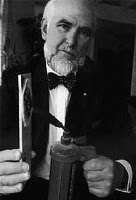Starlite: Nuclear Resistant Superplastic
An amateur chemist may have invented one of the most important materials in human history. A man with no formal scientific training claims to have created the concoction using a food processor in his kitchen! The problem? He may have been too greedy for us to get to ever experience it. The invention, a non-toxic and extreme heat resistant plastic that could actually be smeared onto an object as a liquid, was dubbed starlite. Not only does starlite hold more promise than most inventions known to man, it also holds more mysteries.
“No material has ever come close to what Starlite does.” – Mark Miodownik of University College, London
“It will be of enormous benefit to mankind. It’s very difficult to think of another invention that is bigger in its implications.” Toby Greenbury, Lawyer
“This is really the most remarkable material.” -Sir Ronald Mason, Former Chief Scientific Adviser to the Ministry of Defence
The inventor, Maurice Ward, is very secretive about the substance, going so far as to refuse to get it patented so that the ingredients aren’t of public record. Ward said the substance is a mixture of about 21 different polymers, but that’s all he’ll say. It’s said that only he and one member of his family know exactly what is in it. Ward carries around a jar of the substance in powdered form, but it can be both a liquid and a solid.
Starlite was introduced to the world in the early 1990′s on a British TV show. To demonstrate it’s capabilities, the substance was spread on an egg, and then a blowtorch was held to it. The blowtorch cracked a regular egg in seconds. The starlite coated egg was exposed to 2200ºF heat for five minutes straight, it was then immediately handled without protection and cracked open by the show’s host. The egg was not even remotely cooked. How did an object so brittle survive the extreme heat, and how was the host able to touch it so quickly?
Ward has presented his brainchild to the British Ministry of Defence, Atomic Weapons Establishment, NASA, and Boeing. Ward wouldn’t release any samples from his sight for fear of reverse engineering, but he allowed tests to be conducted to prove the materials’ worth. Starlite was coated on various objects and subjected to some of the most rigourous tests known to man. Laser beams that would normally vaporize steel or brick couldn’t penetrate starlite. Nuclear blast simulators up to 18,000ºF, nearly twice as hot at the surface of the sun, were helpless. The coated material was charred after the tests, but no dangerous byproducts were burned off and the objects remained intact. A diamond would’ve melted at 1/3 of that temperature. Starlite behaves unlike any material we’ve ever seen.
Some claim the idea is nothing more than a hoax, but the visual evidence, and reports from some of the top companies in the world, lend to the contrary. The question is, why hasn’t this amazing superplastic been deployed yet? That’s where the mystery lies. Was Ward really that stubborn? He’s been described as being impossible to deal with, one day asking for something, the next day demanding more. Ward knew what he had, and wanted the moon. He thought starlite was worth billions. It’s assumed that Ward’s paranoia about being screwed out of what his invention was truly worth prevented it from being commercially introduced. It’s tough to figure out just what went wrong with starlite, and if there is any way to salvage the situation.
Imagine if starlite did go public? Military and space programs would obviously be chomping at the bit. A Q-value measures a substances energy absorbtion capabilities. The tiles used to keep the space shuttle safe while entering the Eath’s orbit have a Q-rating of 1. Starlite supposedly has a Q-value of 2,470. A starlite coating on a spacecraft would be 75 times thinner than the tiles as well.
The material sounds so amazing that’s it’s easy to see why Ward wouldn’t want to reveal it. It’s hard to believe that if a particular company or government had the secret formula, they’d ever want to share it. The story of starlite is quite sad; if the product was able to withstand greater heat than produced by the sun and non-toxic to boot, it could have been used to protect our firefighters, homes and transportation from disaster. Ward died in 2011 without a commercial realization of starlite, which makes you wonder if we’ll ever get to experience the superplastic in action.
Comments
Tags: maurice ward, starlight, starlite, starlite material, starlite plastic, super plastic, superplastic
Trackback from your site.



Comments (1)
observer
| #
I am betting that the “relative” starts singing very soon! “Fill my heart with song and let me sing forever more (I’ll have all I’ve longed for ’cause I’m dealing that’s for sure)”
Reply